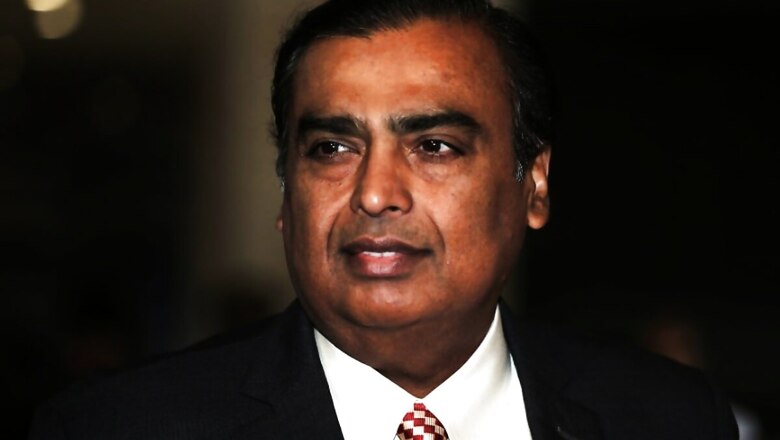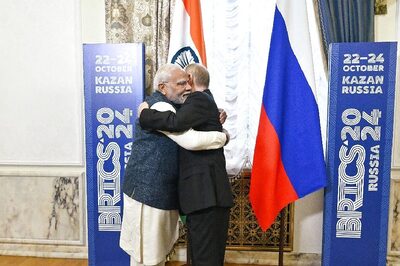
views
In what is being seen as one of the biggest deals in India’s retail space, Mukesh Ambani’s Reliance Retail on Saturday announced that it is acquiring the retail and wholesale business and the logistics and warehousing business from the Future Group for Rs 24,713 crore.
The deal will cement Reliance’s position as the undisputed leader of India’s retail segment, giving it a strong footing in the grocery and apparel segments, in turn boosting order volumes for the conglomerate, which plans to focus heavily on digital in the days to come. It will also add muscle to Reliance for its ongoing battle with Amazon for the Indian e-commerce market.
As we speak about the deal, here’s all you need to know about how RIL, which once focussed on petrochemicals and oil and gas, entered the consumer business, and what it holds for the conglomerate now.
How it began
RIL entered the organised retail segment in 2006, around the time that RIL was being divided between the brothers Mukesh and Anil Ambani. Christened Reliance Retail, the company started off with the launch of the first Reliance Fresh store in Hyderabad. The idea was to make buying groceries and vegetables a lifestyle experience at neighbourhood market prices. With an investment of Rs 25,000 crore, RIL’s aim was to roll out this format for segments such as consumer durables, pharmacy and lifestyle products as well.
Going beyond Reliance Fresh
Reliance gradually widened its horizon across segments such as electronics, fashion and the cash-and-carry businesses. While Reliance Digital, the consumer electronic retail chain was launched in 2007, the company ventured into fashion and the wholesale cash-n-carry segments in 2008 and 2011, respectively, through Reliance Trends and Reliance Market. By 2011, Reliance Retail had achieved $1 billion in sales.
Growth of the giant
By 2014, Reliance became the largest retailer, surpassing Future Group in terms of revenue. Future Group’s overall retail revenues totalled up to Rs 13,666 crore on an annualised basis for the financial year ended March 2014, at a time when Reliance Retail’s revenue had shot up to Rs 14,496 crore.
Around the same time, Reliance tried to test the e-commerce space with the launch of an online grocery store, reliancefreshdirect.com to deliver groceries in Mumbai. In 2016, it made a full-fledged entry into e-commerce with the launch of curated fashion platform ajio.com. The online commerce space had already heated up with millions of dollars of venture capital money flowing into India.
Reliance was not the only offline retailer looking for an online presence. Aditya Birla Group had also launched its fashion portal, called abof.com, and Shoppers Stop had tied up with Snapdeal to open its online store. All of these companies were competing with the likes of Myntra, which had been acquired by Flipkart two years earlier.
In September 2016, RIL launched its telecom service, Jio, announcing free telecom services till at least that December. This would go a long way in shaping up how the internet was consumed in India. Meanwhile, Reliance Retail continued to grow. It notched up $10 billion in revenue in 2018.
Mergers and Acquisitions
The company went international with the acquisition of British Toy retailer Hamleys in 2019. Earlier this month, it also made a majority acquisition in online pharma company Netmeds for around Rs 620 crore and will take on the likes of Amazon and Flipkart in the segment.
Reliance Retail also has a portfolio of 46 exclusive international partner brands in the luxury segment, including the likes of Armani and Burberry.
Weathering the Covid storm
As with other retailers, Reliance Retail’s numbers, too, were hit by the pandemic. Compared to the same period a year ago, Reliance Retail’s revenue declined 17 percent to Rs 31,663 crore during the quarter ended June 30. The company reported a net profit of Rs 431 crore despite 50 percent of its stores being fully shut and 29 percent operating partially.
Growth of JioMart
Reliance Retail’s online consumer grocery platform JioMart, which was launched in April, has become immensely popular. With over 10 lakh downloads, it is behind only Amazon and Flipkart in terms of app downloads.
JioMart currently offers groceries and other essentials and plans to introduce new categories, including electronics and fashion. It is learnt to be currently receiving 2.5 lakh daily orders from 200 locations across India.
















Comments
0 comment